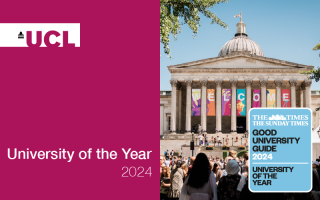Supervisors: Professor Wei-Li Di, Professor Sergi Castellano
Characterisation of cultivated skin stem cells using bio-engineered skin model, single-cell transcriptomics and bioinformatics – application for skin graft gene therapy for genetic skin diseases
Background:
Genetic skin diseases are rare genetic conditions mainly affecting the skin. There is, currently, no curative treatment for these conditions. Various gene therapy approaches have been developed and autologous gene modified skin sheet therapy is the most successful therapy(1). We have performed a phase 1 gene therapy trial for the genetic skin condition Netherton syndrome, in which skin cells (keratinocytes) including keratinocyte stem cells (KSCs) were isolated from patients’ skin biopsies, gene modified, cultured as skin-like sheets and grafted back onto patients(2). The outcomes of the therapy are encouraging, but the prolonged sheet culture impedes the gene therapy from moving forward. The long culture time is because only 0.1 to 1% of KSCs can survive during isolation due to anoikis induced by dissociation of keratinocytes from the skin. Recent studies have suggested that Rho-associated inhibitor (ROCKi) could mitigate dissociation-induced anoikis in stem cells, in order to speeding up keratinocyte growth and reducing sheet culture time (3). However, whether the keratinocyte stem cell characteristics following ROCKi treatment are maintained, and thus remain comparable to those original/non-treated cells, a critical safety issue for future gene therapies, is not known.
Aims/Objectives:
We aim to examine whether the transient application of ROCKi can effectively expand keratinocytes including KSCs without changing the characteristics of keratinocyte stem cells
Methods:
The methods involved in the project will be i) cultivation of fresh isolated skin cells used the methods established in our lab and treat cells with or without the ROCKi. Colony formation efficiency (CFE) assay for stemness cells will be performed to determine the effect of ROCKi on KSCs growth speed. Further, the influence of ROCKi on the stemness of the KSCs will be evaluated by examining stem cell markers such as p63, Integrinβ1α2, Keratin 1 and 14 using immunoblotting, RT-qPCR and Immunofluorescence staining and flow cytometry; ii) carrying out a single-cell RNA sequencing in cells with or without the ROCKi treatment to examine transcriptome expression in each single cell. This will involves in single cell library preparation and running next generation sequencing; iii) comparison of the transcriptomes data obtained from single-cell RNA sequencing using established bioinformatics’ approaches(4). This work will be supervised by one of supervisors Dr Sergi Castellano who has expertise on Genetics and Bioinformatics.
Timeline:
We expect the student to culture keratinocyte stem cells, work out the optimal dosage regime on cells and collect cell samples for RNA-seq in the first 8 to 12 months and check stemness of cultured cells including CFE, immunostaing/blotting in the next 6 months, and run single-cell RNAseq and perform bioinformatics analyses in the final 6 to 8 months.
References:
1. Hirsch, T., et al. Regeneration of the entire human epidermis using transgenic stem cells. Nature 551, 327-332 (2017).
2. Di, W.L., et al. Ex-vivo gene therapy restores LEKTI activity and corrects the architecture of Netherton syndrome-derived skin grafts. Mol.Ther. 19, 408-416 (2011).
3. Terunuma, A., Limgala, R.P., Park, C.J., Choudhary, I. & Vogel, J.C. Efficient procurement of epithelial stem cells from human tissue specimens using a Rho-associated protein kinase inhibitor Y-27632. Tissue Eng Part A 16, 1363-1368 (2010).
4. Joost, S., et al. Single-Cell Transcriptomics Reveals that Differentiation and Spatial Signatures Shape Epidermal and Hair Follicle Heterogeneity. Cell systems 3, 221-237.e229 (2016).
 Close
Close



